Promoting Global Awareness in Second Grade Students
Fran Wilson and the Madeira Literacy Community
Our school-based literacy group consisted of four second grade teachers as well as the elementary art, music, library, gym, and computer teachers in the Madeira City School District. All of the team members worked at the elementary building so it was convenient to meet in the mornings prior to the start of the school day. The literacy team met twice per month in the elementary school library starting in September. Rich discussions were the focus of our meetings. We began the year by establishing a goal for our learning together as colleagues and for the learning that we hoped would occur in our classrooms.
During our initial meetings each team member set a personal goal for our study. These goals helped to keep everyone focused during the year of learning together. The team’s goal was to promote global awareness among our students due to the limited diversity within our school district’s population. The first action step for the team was to select quality children’s literature about children from around the world and use the power of reading aloud to encourage student thinking and understanding of the world. The read alouds would also be used to promote cross-curricular instruction as our students learned about the geographical locations and everyday life and cultures. In addition, we hoped that through our regular meetings our team would learn how to encourage an appreciation for all people of the world using global literature and follow up activities in the classroom and through working with other teachers in specials.
Our next step was to begin the process of selecting quality children’s literature to use with our students. Initially we thought that we would determine specific countries around the world and find literature to depict the people and land of each. The Worlds of Words website enabled us to search for lists of books by both country and age of reader. The synopsis of each book provided on this site is very helpful.
The August/September issue of Reading Today included an article written by Kathy Short and several members of the Notable Books for a Global Society Award. This article became the focus of discussion at one of our team meetings. The team’s thinking about our planned book selection for the year shifted. We decided not to select specific countries and books because we didn’t want our students to acquire information about other cultures from the tourist perspective. Instead we decided to select books with a story that would enable our children to acquire an understanding of how people in that culture live, think, and feel while making emotional connections and developing empathy. We felt that this would enable our students to make personal connections to the characters of the books and truly allow our students to relate to other children of the world. The guidelines in the article as well as on Worlds of Words assisted us in selecting books to use in the classrooms and the library.
Before we began using the global children’s literature with our students, each second grade teacher posed a question in their classroom: Are all the people in the world the same? This led to some interesting discussion in each class. Some of the children quickly responded, “No,” while others thought for a minute and gave responses like: “We’re all people.” “We all need to eat.” “We all wear clothes.” “We all like to play.” A few children began to question the idea stating that they didn’t think all children of the world played because they had to work. The children brainstormed ways that they could discover if people of the world are the same. While the student suggestion of traveling to a few other countries was a great idea, the children generated new ideas when they learned that most of them didn’t have passports or the money to cover travel expenses. The children then decided that they would learn about people of the world through books!
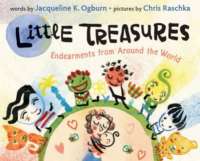 Throughout the year our team met and discussed activities that could be used to extend the children’s understanding of global cultures after the sharing of particular books. In art, it was fun to study houses around the world with If You Lived Here: Houses of the World (Larouche, 2011). After careful planning and discussion, each child created a collage style picture of a house from somewhere across the globe. The children enjoyed reading about the games played by the Maasai children in Only the Mountains Do Not Move (Reynolds, 2011) and were inspired to research games around the world on the internet to play in gym class. The computer teacher encouraged the children to use Google Maps to explore the countries that the children had visited through the reading the books. Each child created a travel brochure during computer class. During the social studies unit on heroes, the children realized that everyone in the world could be a hero. The music teacher taught the children a song about being an everyday hero to make a difference in the lives of others. The theme of the second grade musical was caring for the earth. This enabled the children to make real world connections with the use of Planting the Trees of Kenya: The Story of Wangari Maathai (Nivola, 2008) and The Mangrove Tree: Planting Trees to Feed Families (Roth & Trumbore, 2011).
Throughout the year our team met and discussed activities that could be used to extend the children’s understanding of global cultures after the sharing of particular books. In art, it was fun to study houses around the world with If You Lived Here: Houses of the World (Larouche, 2011). After careful planning and discussion, each child created a collage style picture of a house from somewhere across the globe. The children enjoyed reading about the games played by the Maasai children in Only the Mountains Do Not Move (Reynolds, 2011) and were inspired to research games around the world on the internet to play in gym class. The computer teacher encouraged the children to use Google Maps to explore the countries that the children had visited through the reading the books. Each child created a travel brochure during computer class. During the social studies unit on heroes, the children realized that everyone in the world could be a hero. The music teacher taught the children a song about being an everyday hero to make a difference in the lives of others. The theme of the second grade musical was caring for the earth. This enabled the children to make real world connections with the use of Planting the Trees of Kenya: The Story of Wangari Maathai (Nivola, 2008) and The Mangrove Tree: Planting Trees to Feed Families (Roth & Trumbore, 2011).
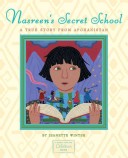 The team witnessed our student’s empathy towards other children in the world. They connected deeply to the lives presented in the global literature. The librarian shared the book, Rain School (Rumford, 2010) with the second graders. Our students were surprised to learn that each year the students in Chad began the school year by helping to rebuild their school from mud. The children made connections with Rain School after the reading of Listen to the Wind (Mortenson, 2009) and Nasreen’s Secret School (Winters, 2009). They learned that some children don’t have schools and a teacher everyday to teach while other countries don’t permit girls to attend classes.
The team witnessed our student’s empathy towards other children in the world. They connected deeply to the lives presented in the global literature. The librarian shared the book, Rain School (Rumford, 2010) with the second graders. Our students were surprised to learn that each year the students in Chad began the school year by helping to rebuild their school from mud. The children made connections with Rain School after the reading of Listen to the Wind (Mortenson, 2009) and Nasreen’s Secret School (Winters, 2009). They learned that some children don’t have schools and a teacher everyday to teach while other countries don’t permit girls to attend classes.
After reading these books a second grader declared, “We need to do something to help other children.” The result was “Project Guatemala.” The children planned and carried out an initiative to raise money to promote literacy in a school through the organization Cooperative for Education. The children felt empowered by their actions as they worked to help other children receive an education.
Guatemala Project
Our team quickly realized that one of the most important things that we could do as teachers to facilitate global awareness within our students was to engage children in meaningful discussions after reading each book. While the activities within the classrooms and at specials extended learning, we could not discount the importance of genuine classroom discussion. As educators we needed to shift our focus from product to process. For our children to grow in their understanding of others, they needed to be encouraged to reflect, share, and make personal connections between themselves and the global literature. The children also needed to have multiple opportunities across time to experience this type of literature and to continue to engage in discussions to foster the development and appreciation for all the people of the earth. Writing about the global literature promoted greater depth in the children’s thinking.
* * * * * *
Writing Book Reviews on Global Literature in a Second Grade Classroom: Nicole Prater
In January our second grade class did a writing unit on book reviews. Because the students loved so many of the global books we were reading, we decided to pick our two favorite books and do class book reviews We chose to review Biblioburro, by Jeannette Winter (2010) and Muktar and the Camels, by Janet Graber (2009). Those two books created rich discussion when we first read them. The students were struck by the fact that children in other parts of the world had to have books delivered to them by a camel or a burro. They could relate so easily to the children’s love for reading in each of the stories and the longing to have good books to read.
Writing the book reviews on these two books allowed the children another chance to interact with the story and each other. They were asked to discuss the overall main idea and what decisions the author made when writing the books. Conversation and writing enhanced student understanding.
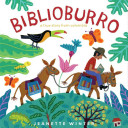
Have you ever seen books traveling on a donkey? We have! In this book we learned about a man named Luis who brings books to poor people in isolated villages. One day his house was full of books so he decided to bring them to the people in the poor villages. He buys two donkeys to carry him and the books to these villagers. On his way to one of the villages he saw a bandit. He said, “Give me your silver.” Luis said, “Can you please let us go by. The children are waiting for the books.” At the very end of the book everyone is very happy with their books.
This book is a true story about a teacher named Luis, who lives in Colombia and delivers books to the kids every weekend. This book reminds us of Muktar and the Camels because they ‘re both about traveling libraries on animals. Our favorite part was when we saw the bandit reading a book under a tree. The illustrations in this book were drawings and paper cutouts. We thought they were very creative and funny. We would recommend this book to all ages.

Have you ever wanted to take care of animals that are hurt? Muktar has. In this book Muktar is a boy who is an orphan and who loves camels. One day a librarian comes and delivers books to the orphanage. The books are being carried on camels. Muktar is really happy to see the camels. He spots that the Number Three camel has a really deep cut on his hoof. If you want to find out what happens next, read this book!
We liked the illustrations because they added a lot of details. The illustrator painted them. This book is a realistic fiction book. It takes place in Africa. Our favorite part is when he rips off his shirt and helps the Number Three camel. This book reminds us of giving money to Guatemala and traveling to different places in the world. We would recommend this book to people of all ages and anyone who likes animals.
* * * * * *
Cultural Conversations: Kristy Wanstrath
The Madeira Literacy Community found out just how important the power of student conversations could be. Whether long, short, spontaneous or prompted by the teacher, cultural conversations of all kinds took place among children in our Madeira second grade classrooms. These conversations grew out of quality children’s literature, thoughtful questions posed by the teacher, and comfortable classroom conditions in which students could freely express themselves. 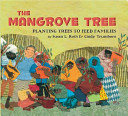 Fortunately, many of the most powerful conversations that occurred in our classrooms can be accredited to the rich literature we incorporated into our daily lessons. Some of the literature that spurred valuable dialogue between students included texts such as Biblioburro (Winter, 2010), The Rule of Hats (McDuffie, 2008), Rain School (Rumford, 2010), The Mangrove Tree (Roth, 2011) and Mukktar and the Camels (Graber, 2009), to name a few.
Fortunately, many of the most powerful conversations that occurred in our classrooms can be accredited to the rich literature we incorporated into our daily lessons. Some of the literature that spurred valuable dialogue between students included texts such as Biblioburro (Winter, 2010), The Rule of Hats (McDuffie, 2008), Rain School (Rumford, 2010), The Mangrove Tree (Roth, 2011) and Mukktar and the Camels (Graber, 2009), to name a few.
Some of the reoccurring ideas that surfaced before, during and after reading these books include:
•children are more alike than different
•children from around the world eat, play, attend school and have a culture unique to their surroundings
•just because something (or someone) is different doesn’t mean it is negative, better or worse
•diversity is necessary and should be appreciated
•wealth means different things to different people
•people of the world should grow to be aware of the world around them
While our literacy community provided various outlets for children to explore the world around them, we all agree that the conversations that occurred in our classrooms were tremendously valuable, meaningful and life-changing. When children are provided with the opportunity to socially interact with each other, particularly in conjunction with a good book, they begin to act in ways that embrace the cultures of the world. With powerful literature paving the way, students really can participate in global experiences that allow them to connect to the world around them.
Celebrating World Water Day: Tammy Saunders
 We began our global awareness literature journey in September. As World Water Day approached in March, students’ minds were already focused on people around the world, children in particular, and how a person’s place in the world shapes lives in certain ways. In our science unit on weather, we studied the water cycle and the need for water to ensure survival. We read many “weather” books, including What Makes It Rain?: The Story of a Raindrop by Keith Brandt (1996).
We began our global awareness literature journey in September. As World Water Day approached in March, students’ minds were already focused on people around the world, children in particular, and how a person’s place in the world shapes lives in certain ways. In our science unit on weather, we studied the water cycle and the need for water to ensure survival. We read many “weather” books, including What Makes It Rain?: The Story of a Raindrop by Keith Brandt (1996).
 As we approached World Water Day, I thought the students had a real understanding of rain, the water cycle, pollution’s effects, and conservation of water. Students also had a growing appreciation of people of the world. I shared books such as All the Water in the World by George Ella Lyon (2011), One Well by Rochelle Strauss (2007), A Cool Drink of Water by Barbara Kerley (2006), and Rain School by James Rumford (2010).
As we approached World Water Day, I thought the students had a real understanding of rain, the water cycle, pollution’s effects, and conservation of water. Students also had a growing appreciation of people of the world. I shared books such as All the Water in the World by George Ella Lyon (2011), One Well by Rochelle Strauss (2007), A Cool Drink of Water by Barbara Kerley (2006), and Rain School by James Rumford (2010).
 I was surprised and touched during our discussion of these books, which so intertwined water and people of the world. The students’ comments reflected a deeper, more intimate understanding of the connectivity of our world and its resources. They loved retelling that there has always been the same amount of water in the world. It was as if a switch suddenly turned on. My students were stirred up.
I was surprised and touched during our discussion of these books, which so intertwined water and people of the world. The students’ comments reflected a deeper, more intimate understanding of the connectivity of our world and its resources. They loved retelling that there has always been the same amount of water in the world. It was as if a switch suddenly turned on. My students were stirred up. 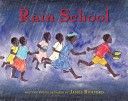 Students found the need and availability of water to be a local and global concern. They wrote responses from the heart and recognized the need to use water wisely and identified how water is important to all people of the world.
Students found the need and availability of water to be a local and global concern. They wrote responses from the heart and recognized the need to use water wisely and identified how water is important to all people of the world.
World Water Day
Final Reflections: End of the Year Global Celebration
A Global Awareness Celebration Day was planned to acknowledge the children’s work across the year. The children’s reflections on their favorite books became one of the focal points of the celebration. Each of the four classrooms, the librarian, and the art teacher selected several books to reflect upon for the program. The children collaborated to determine the main idea of each of the books as well as why each book was particularly meaningful to the class. Speakers from each classroom were chosen to share these points during the program. A PowerPoint of photos of each book cover was projected onto a screen as the children delivered a book talk on each featured book to the audience of parents, grandparents, and administrators. A documentary that compiled much of the student’s writing, artwork, songs, games, and video clips of students sharing what they had learned was aired. The children and guests enjoyed many snacks of foods from around the world before touring the hallway of the student artwork and written reflections, and visiting the classrooms to view individual student posters created on a choice of research topics of the people, cultures, land, or climate outside of the U.S.A.
This was a year of learning for both the members of the Madeira Literacy Team as well as the second grade students at Madeira Elementary. The sharing of global literature with students through classroom and library read alouds provided opportunities for our students to gain knowledge of other cultures as well as encouraged students to form strong emotional connections to people around the world. The immersion in the literature encouraged empathy and the need to work toward the basic human right for other children to receive an education and have the opportunity to learn.
The students’ initiative to want to help others surprised us. We typically teach seven and eight year olds whose lives seem to revolve around themselves and their own needs. The global literature that they experienced through read alouds, discussions, and extension activities has created a positive attitude towards the people in other parts of the world. Our assistant superintendent commented to the team that we might never know the long-term impact of the experiences that we have provided for our second graders.
As teachers we learned to value process over product. An understanding of global awareness doesn’t happen overnight. Teachers need to select quality literature that encourages students to naturally make connections to the characters and storylines. Rich literature stirs children’s emotions and fosters an understanding of others while simultaneously enabling children to learn about the people and land on this earth. Encouraging meaningful discussions involves creating an open atmosphere where children freely share their insights on the books and facilitating with open questions that prompt student thinking and growth. Most importantly, we learned that teachers also learn best when involved in an experience where we share our personal steps in the process with one another to grow together.
References:
Brandt, K. (1996). What makes it rain?: The story of a raindrop. Mahwah, NJ: Troll.
Graber, J. (2009). Muktar and the camels. New York: Henry Holt.
Kerley, B. (2006). A cool drink of water. New York: National Geographic.
Larouche, G. (2011). If you lived here: Houses of the world. New York: Houghton.
Lyon, G. E. (2011). All the water in the world. New York: Simon & Schuster.
McDuffie, A. (2008). The rule of hats. Montgomery, OH: Whole Pie Books.
Mortenson, G. (2009). Listen to the wind. New York: Penguin.
Nivola, C. (2008). Planting the trees of Kenya: The story of Wangari Maathai. New
York: Macmillan.
Reynolds, J. (2011). Only the mountains do not move: A Maasai story of culture and conservation. New York: Lee & Low.
Roth, S. & Trumbore, C. (2011). The Mangrove Tree: Planting trees to feed families. New York: Lee & Low.
Rumford, J. (2010). Rain School. New York: Houghton.
Short, K., Evans, A., & Hildebrand, K. (2011). Celebrating international books in today’s classrooms: The Notable Books for a Global Society Award. Reading Today, 29 (1), 34-36.
Strauss, R. (2007). One well: The Story of water on earth. Tonawanda, NY: Kids Can Press.
Winter, J. (2010). Biblioburro: A true story from Columbia. New York: Beach Lane.
Winter, J. (2009). Nasreen’s secret school. New York: Beach Lane.
Nicole Prater is a second grade teacher at Madeira Elementary School.
Tammy Saunders is a second grade teacher at Madeira Elementary School.
Kristy Wanstrath is a second grade teacher at Madeira Elementary School.
Fran Wilson is a second grade teacher at Madeira Elementary School.
WOW Stories, Volume IV, Issue 4 by Worlds of Words is licensed under a Creative Commons Attribution-NonCommercial-ShareAlike 4.0 International License.
Based on a work at https://wowlit.org/on-line-publications/stories/iv4/.






